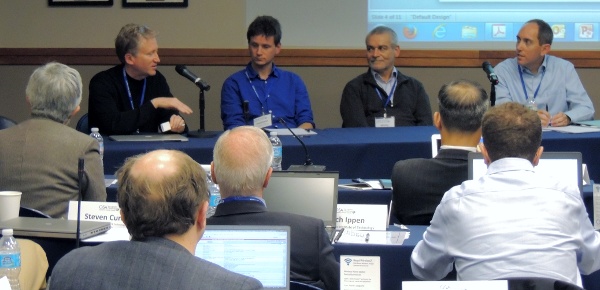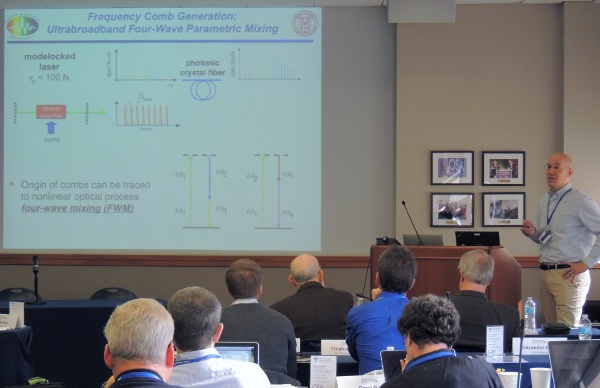Frequency combing through the noise
Frequency combing through the noise
Adam J. Fleisher
A detailed look at the behavior of microresonator frequency combs reveals the existence of several stable mode families, including a fully mode-locked state. Quantitative models could aim to predict exotic yet stable high-order soliton states (so-called step-phase states) of microresonator combs, operating conditions that appear ubiquitous regardless of microresonator material. In addition to a panel discussion moderated by Scott Papp (National Institute of Standards & Technology, NIST), the latest developments in microresonator combs were reviewed during a lecture by Optica editor-in-chief Alex Gaeta (Cornell University).
Another challenge to theoreticians is modeling how pump laser technical noise is transferred through a high-powered fiber oscillator. When it comes to testing quantitative models experimentally, can one select a few parameters that are relatively easy to measure experimentally that can act as an acceptable figure of merit for future models? For high-powered Er-doped fiber lasers operating at the telecommunications wavelengths where modeling of fiber dispersion is key to predicting laser performance, modeling of semiconductor saturable absorber (SESAM) effects on the actual laser cavity may also provide answers to outstanding frequency-comb design questions.
Although frequency comb phase noise is an important parameter for high-performing time transfer and optical clock applications, other frequency comb properties, such as spectral flatness or repetition rate, may be more important to a user wishing to perform direct frequency comb spectroscopy or wavelength division multiplexing (WDM). Quantitative modeling of application-driven frequency comb parameters should simplify the theoretical complexities required to direct the precise experimental design of novel mode-locked laser sources.
Tomorrow on day two of the OSA Incubator (Friday, November 21) meeting participants can look forward to further discussions of frequency comb applications as well as a panel discussion regarding the spatio-temporal dynamics of optical combs.

Kerry Vahala, CalTech; Stephane Coen, University of Auckland; Misha Sumetshy, Aston University; Scott Papp, NIST

Alex Gaeta, Cornell University
